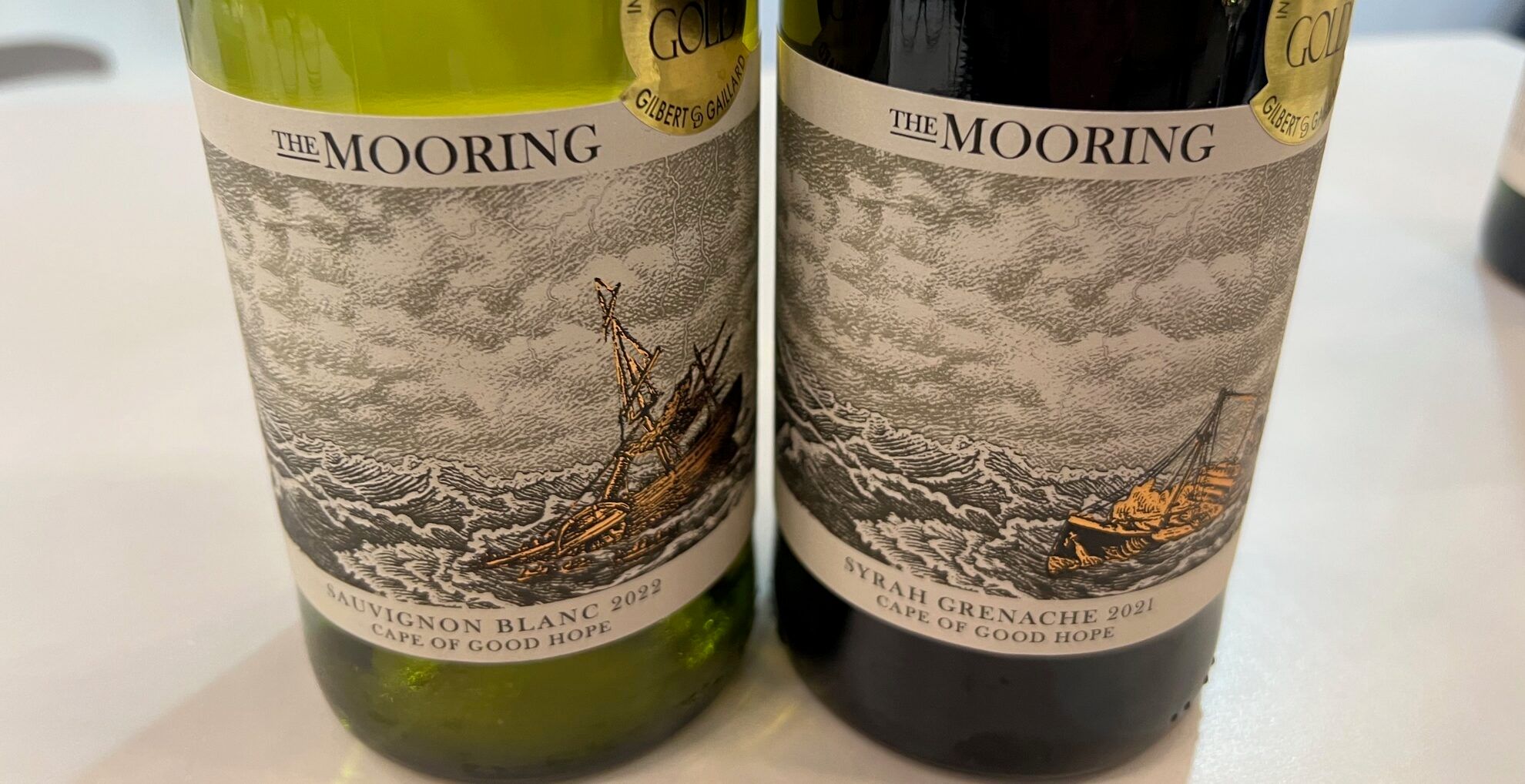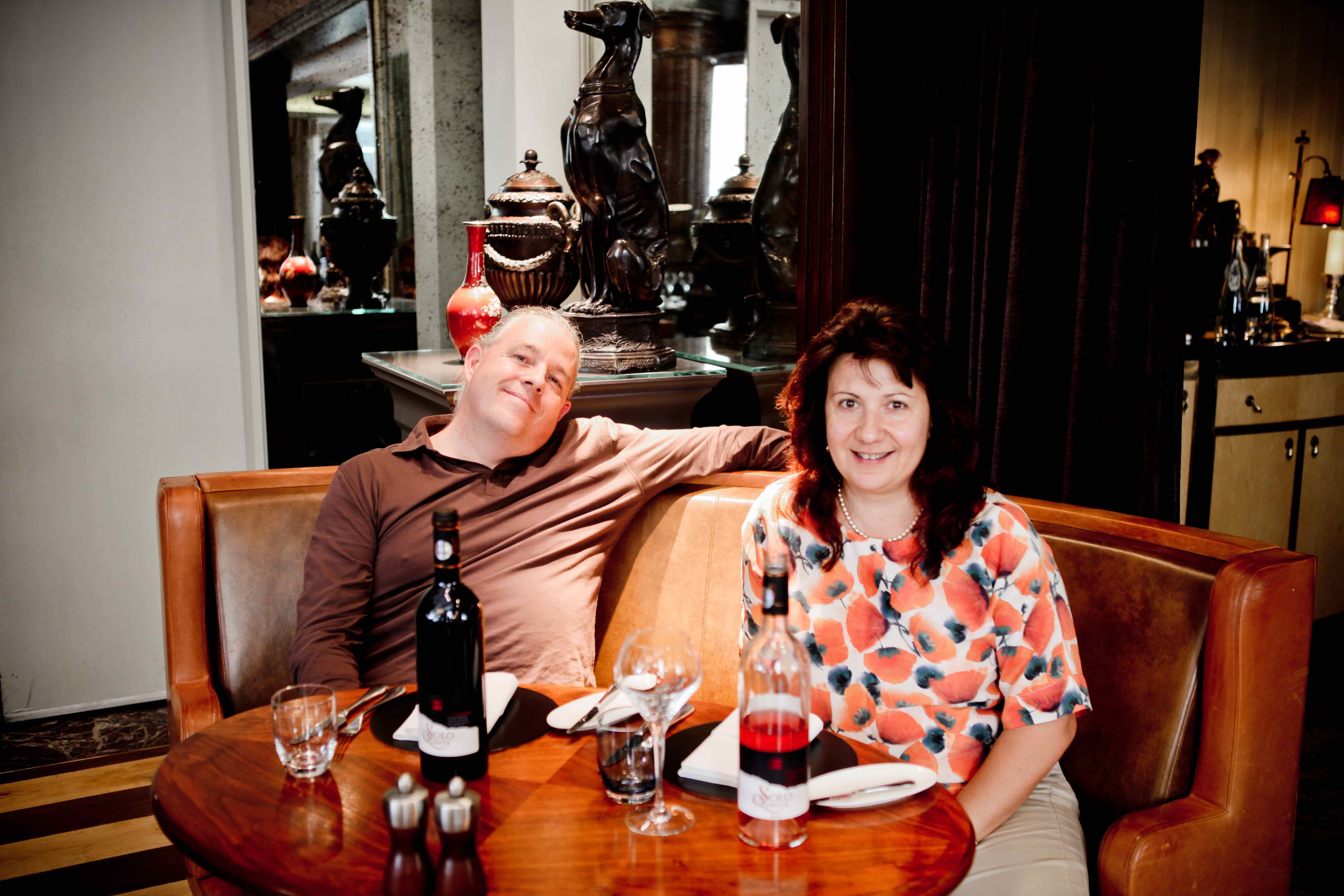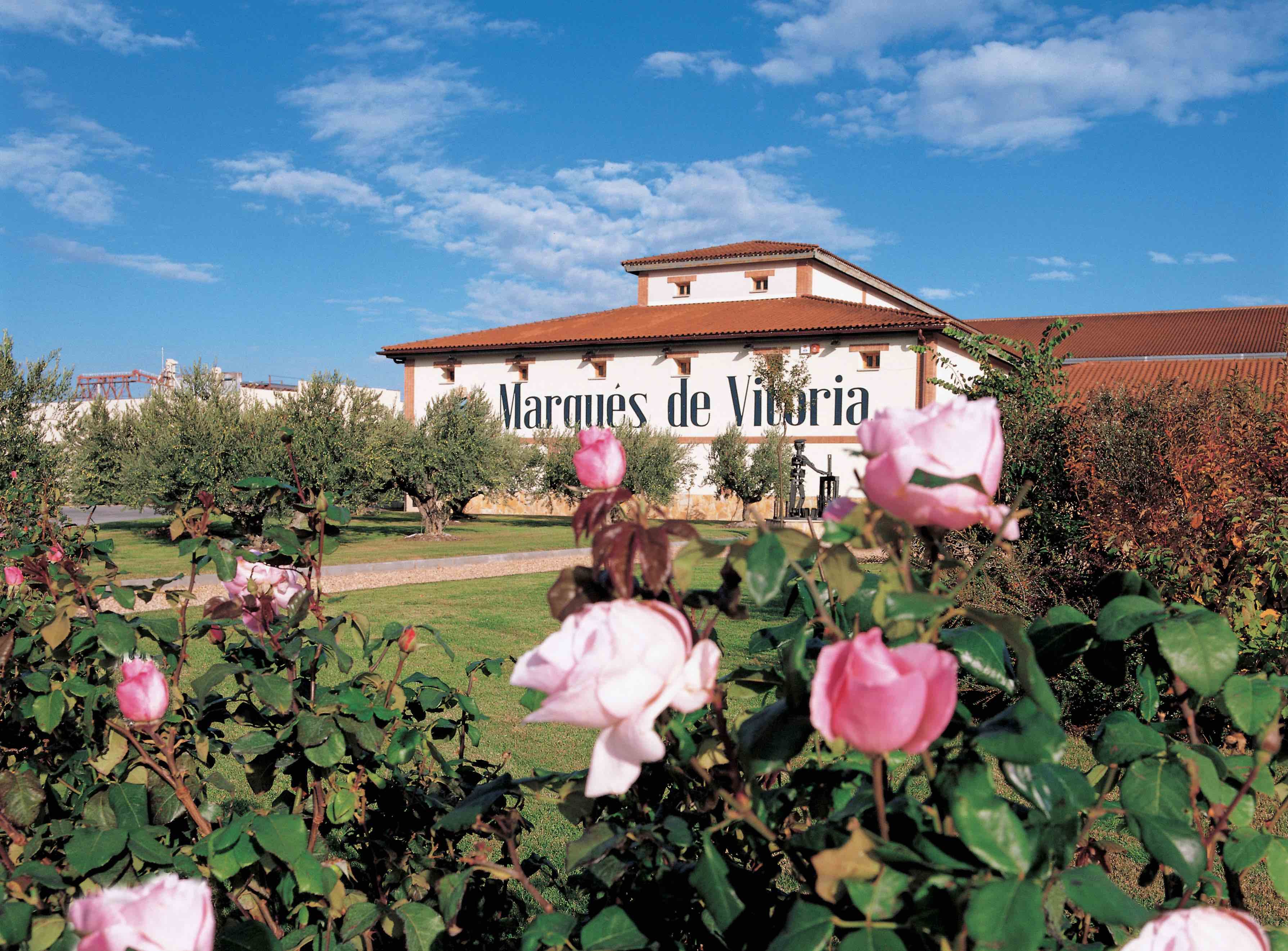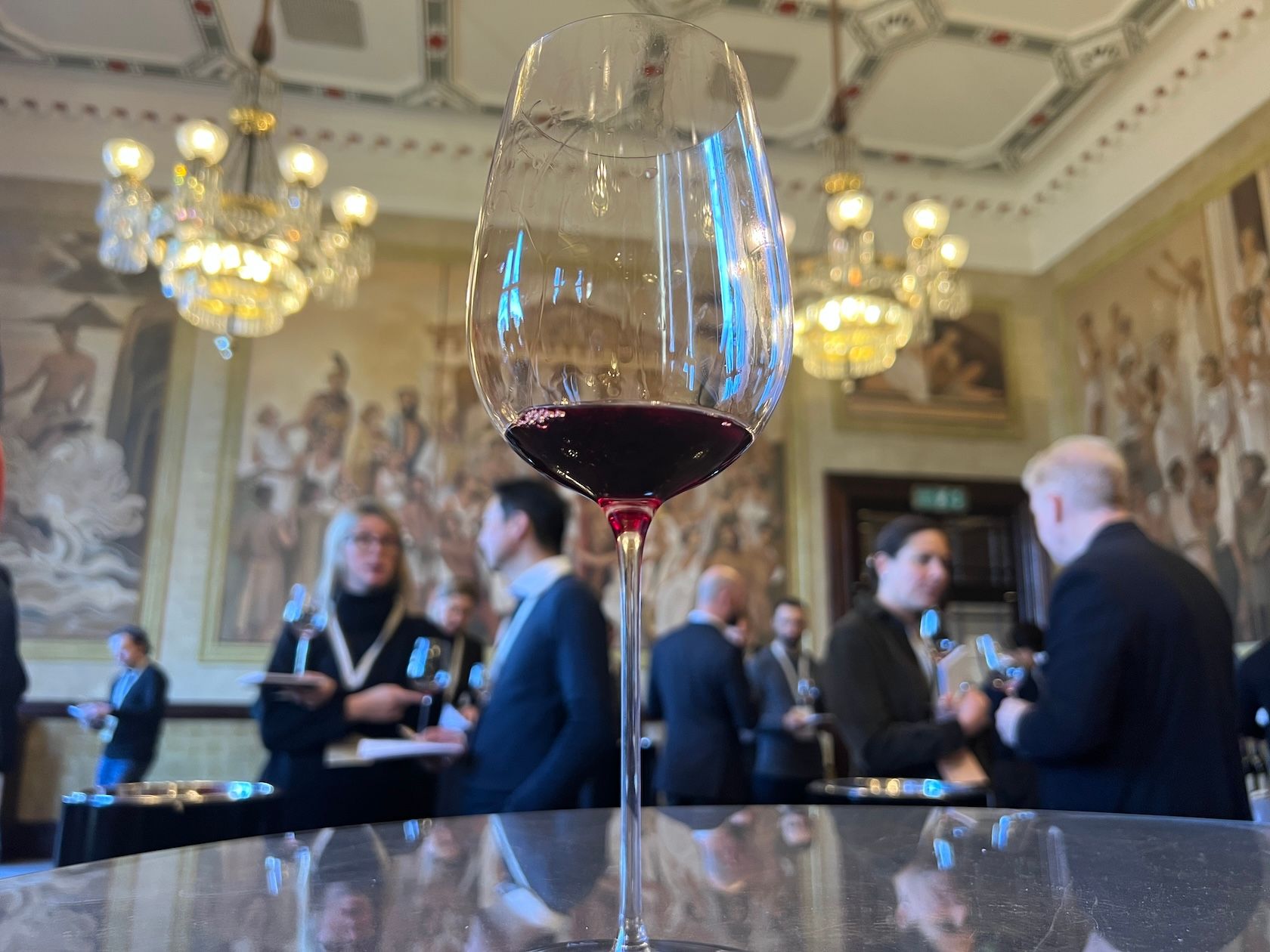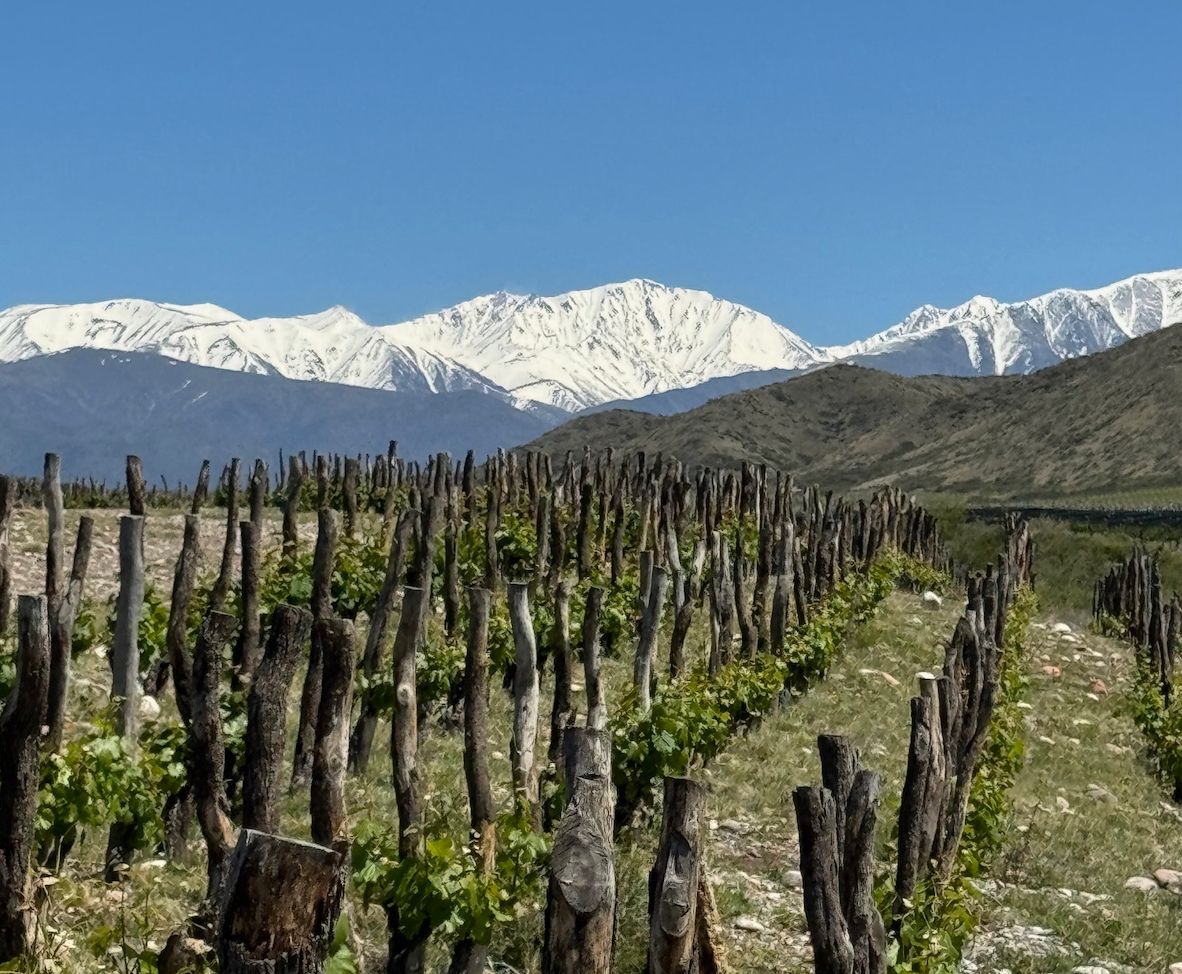In just four years Beyond Wines has amassed an impressive range of wine producers that can supply any type of French, Spanish, South African and Australian Barossa wine, there are two Champagne houses, and two Prosecco producers plus Romanian wine giant Cramele Recas. I met up with eight of the wine producers and asked them to each show me three or four wines that best represent what they are about.

Beyond Wines' stand at the London Wine Fair. The company are big fans reporting a busy three days seeing all key accounts.
GVS Group
Producing over 45 million bottles of French wine every year, GVS Group is one of the largest custom wine facilities in the world and lives up to its claim that it can offer national and international clients ‘French wine in all its styles’. It was only founded in 1987 but since then has grown to an annual turnover of €120m through its three-pronged approach – GVS Integrated Wine Services (a full service negoce business), three owned domaines, two in Burgundy and one in Beaujolais and 1752 Wines – a sales and distribution arm for 30 partner winemakers.
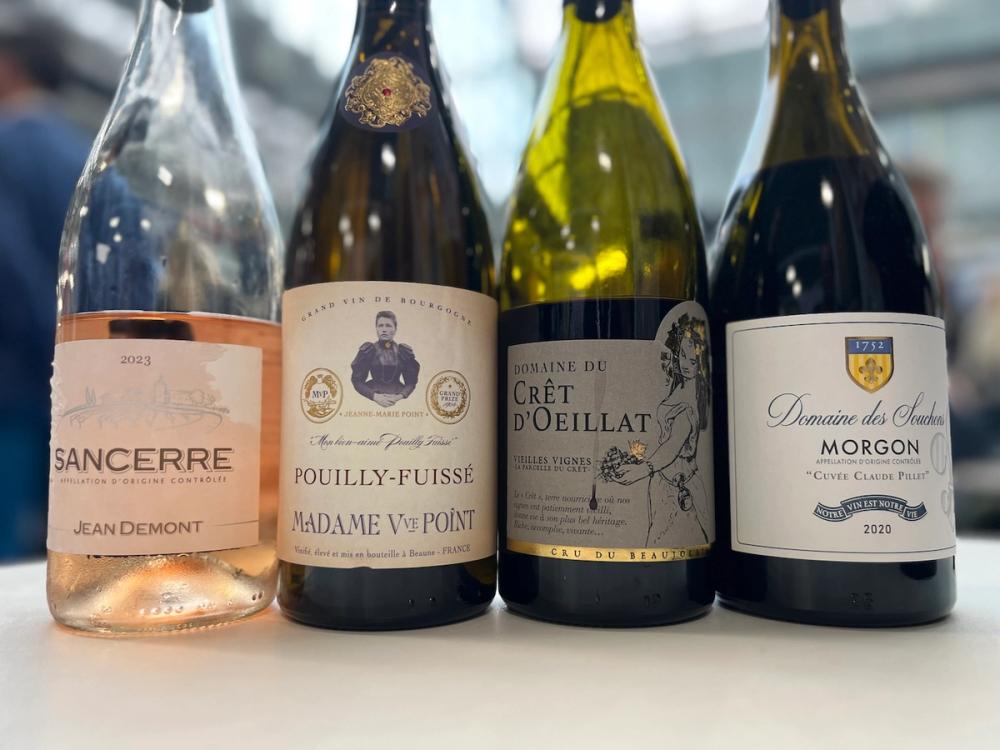
I tasted four wines from its own estates:
Domaine des Souchons, Morgon 2020 13.5%
Established in 1752 this Beaujolais producer makes five different cuvees from 40 parcels across its 30ha-owned vineyards in arguably the flagship cru of the region. Vinified and aged in a mixture of concrete and egg, the wine that comes from these 60 year-old vines are red fruit-driven, rounded but with great texture.
Madame V Point, Pouilly Fuisse 2020 13%
This Pouilly-Fuissé won the Grand Prize at the Saint Louis World’s Fair in 1904. Since then this Burgundy estate makes wines across 30 appellations. Warm, rounded, classic Pouilly-Fuissé with lovely balance and fruit flavours.
Domaine du Crêt d’Oeillat, Vielles Vignes Parcelle du Cret, Régnié, 2023 14%
From one of GVS’s 1752 partner estates, this is one of two cuvées that Domaine du Crêt d’Oeillat makes in Beaujolais’ youngest cru, Régnié. This is a gastronomic wine from soils rich in pink granite. Deep purple-red, this is a mineral-charged wine fine, ripe tannins and a mouth-watering dry, ‘river stone’ finish.
Jean Demont, Sancerre 2023 12%
Classic Loire rosé made with 100% Pinot Noir – red berries and orchard fruit on the nose, hint of citrus, light with decent acidity which gives it plenty of food pairing opportunities.
Basedow’s of the Barossa
With vineyards first planted in 1896 and family roots dating back to 1848 when their family first emigrated from Germany, Basedow’s of the Barossa is one of the oldest wine families of the region. Ten years ago, fifth generation brothers Peter, Michael and Richard bought back the brand and now produce 12 cuvées plus white label wines for two of Australia’s largest supermarkets. Scale is massive with the company owning 340 hectares, producing 120,000 dozen wines and still selling off 90% of their grapes.

I tasted three of its wines:
Basedows of Barossa, Barossa Shiraz 2021 14%
60-65% of this purple-red Shiraz is aged in one year old barrels for 12-18 months, bringing richness, depth and fine-boned texture. There’s 11% Petit Verdot and 3% Cab Sauv in here which brings structure, complexity and acidity. Black pepper and spice tin, cherry, chocolate and a twist of citrus.
Basedows of Barossa, Barossa Cabernet Sauvignon 2019 14%
Black fruits and eucalyptus dominate this classic Cab Sauv, 50% of which has been aged in oak. Very fruity, good structure, rounded with warm, well-integrated tannins.
Basedows of Barossa, Barossa Oaked Chardonnay 2023 13%
“We’re in the fashion industry,” was how the winemaking was explained to me of this crowd-pleasing oaked Chardonnay. 20-30% of the wine goes through malolactic fermentation bringing a rounded, creamy mouthfeel. Heavy use of oak adds texture a gunflint note with tropical fruits, citrus and melon flavours.
Liquid Diamond
Since its launch three years ago this own brand prosecco has become one of the top 10 best-selling prosecco brands on Amazon – selling 150,000 bottles of Rosé and 100,000 bottles of white (largely through Sainsburys). Its striking bottle design is based on rose quartz healing crystals and the brand claims to be the only wine company to use emojis as tasting notes on the back label. The wine is made and bottled in Valdobbiadene. The 20cl bottle is also very handy for handbags everywhere!
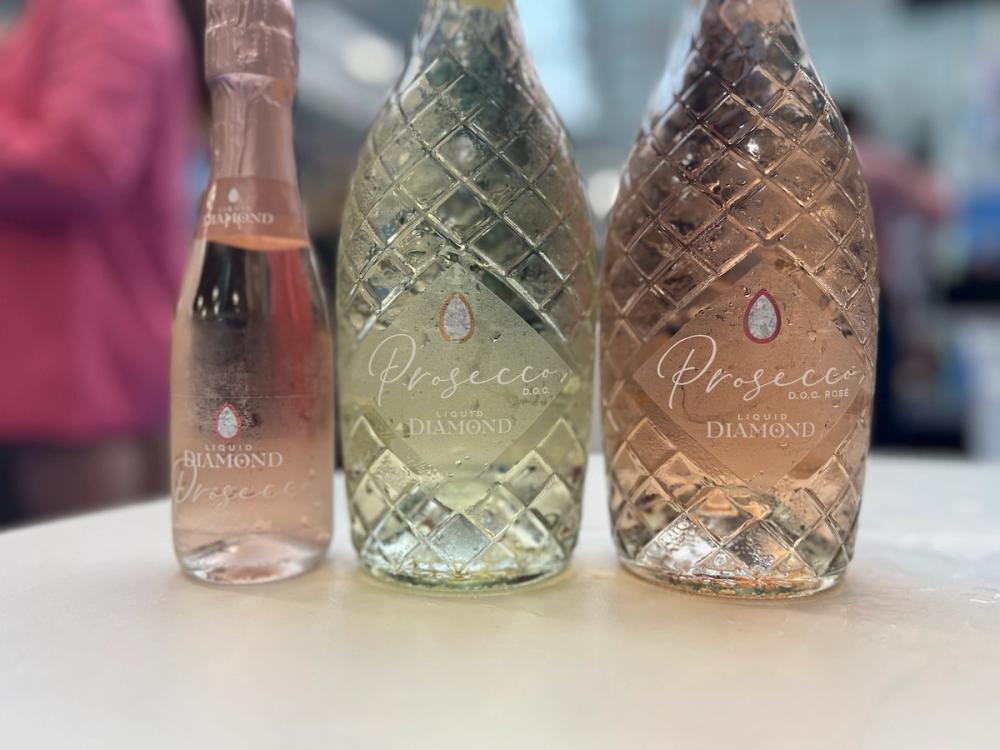
Liquid Diamond Prosecco DOC
Steady fine bead, very fruity, with up-front, yellow stone fruit and orchard fruit notes. You pick up citrus sherbet on the long dry finish.
Liquid Diamond Prosecco DOC Rosé
With 15% Pinot Noir used in the making of this quality prosecco, red berries – raspberries and wild strawberries dominate.
Overhex Wines
South African custom wine producer that used to be a Cape cooperative but went into private ownership 18 years ago and is now producing 60 different wines with an annual turnover of three million bottles from 11 different regions – only one small vineyard belonging to the company, the rest of the grapes sourced from partner growers. Overhex has eight successful ranges that it sells to 47 different countries worldwide – Buyer’s Own Brand is a range of tailor-made white label wines, while the Balance range, for example, was the top-selling wine in China 2018/9.
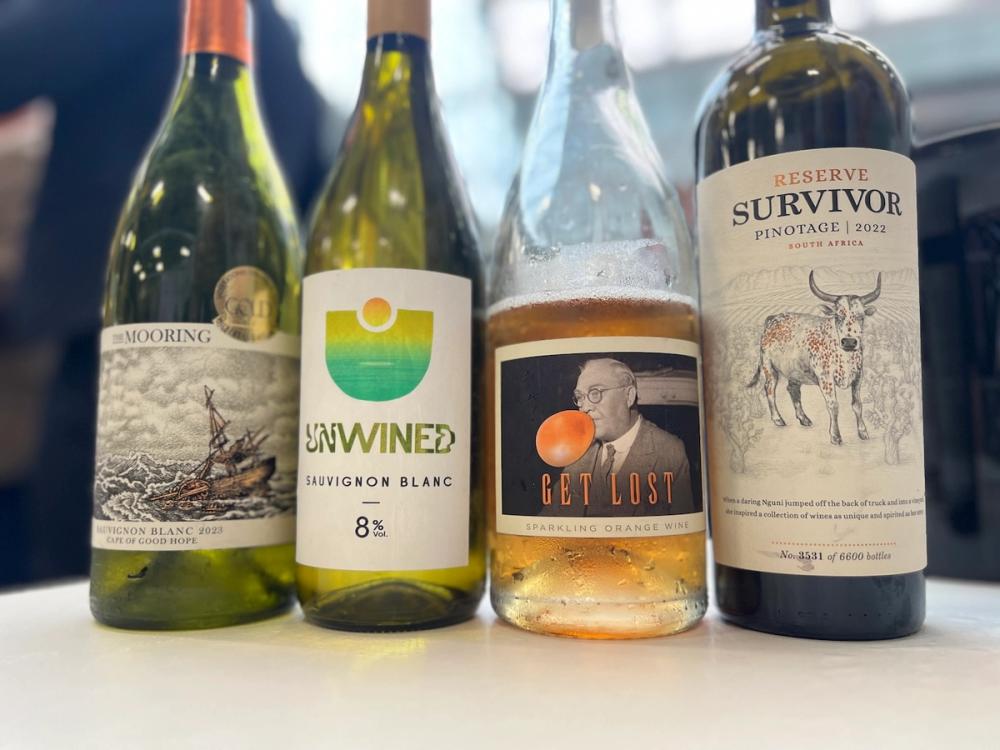
I tasted four wines:
Unwined Rosé 8%
One of three low alcohol wines – a Sauvignon Blanc, Merlot and Rosé. The Rosé is made up of Sauvignon Blanc, Chenin Blanc and 2-3% Merlot with a percentage fermented to 0% alcohol. Apparently, it is extremely hard to get the alcohol down to 8% whilst maintaining the varietal character but this they have done with a fruit-driven, ripe and refreshing Rosé.
Get Lost Sparkling Orange Wine, 2023 12%
Each of the Get Lost wines was awarded a Gold medal at Gilbert & Gaillard’s International Challenge 2023. The labels are wacky and play to a younger consumer base and those who do not take things too seriously. This surprisingly good sparkling orange wine was made with Chenin Blanc that has had 2-3 weeks skin contact. Orange blossom aromas, with orange skin notes, the wine is really crisp, dry, textured and genuinely interesting – lot of fruit here.
The Mooring Sauvignon Blanc, 2023 12%
A two-wine range that references the Cape’s coastal vineyards and pays homage to the region’s notorious maritime history – with each label depicting the story of a ship that never made the mooring that it was destined for. There is a Syrah/ Grenache blend but I tasted the Sauvignon Blanc which is steel fermented, light, fresh and accessible with grassy notes – a contrast to Marlborough SB.
Survivor Reserve Pinotage, 2022 South Africa 14.5%
Pierre Wahl is Overhex’s winemaker for the Survivor wines, a four-wine range using fruit from a variety of the Cape’s best terroirs. Wahl is dubbed ‘the Pope of Pinotage’ and this well-made, complex red shows why. Using fruit sourced from the dry, rocky soils of the Swartland, the wine spends 18 months in 300l French oak barrels 50% of which are first and 50% second fill. Alluring nose, complex, classic Pinotage which has a bold structure encouraged by slightly earlier picking.
Familia Martínez Zabala
Founded in 1861, and now run by the fourth generation of the family, this is another enormous wine group comprising six bodegas that produces 24 million bottles of wine per annum with Faustino accounting for the lion’s share. I tried three wines from Marqués de Vitoria which makes seven cuvées – six from Rioja and one from La Mancha. With 700 hectares it is one of the largest landholders in the region, one of the only Rioja producers to make a Cava and producing one million bottles per annum that sell in over 40 countries.
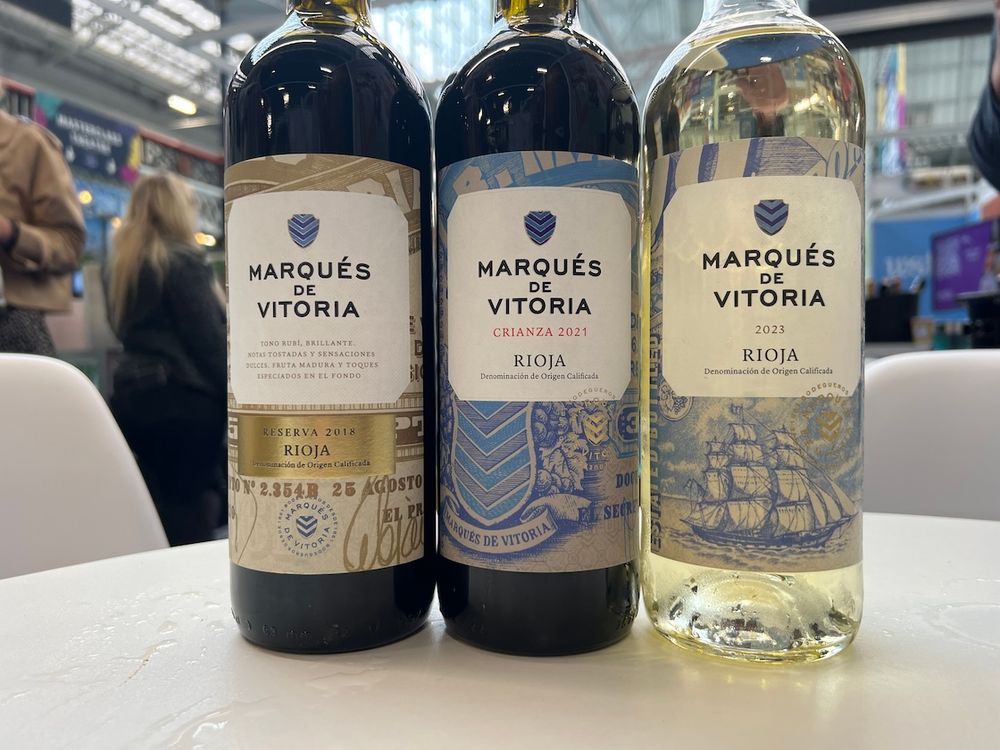
I tasted three wines:
Marqués de Vitoria Blanco, 2023 12.5%
From Viura vines grown at 700m this is classic fruit-driven, steel-fermented white Rioja – fresh, light, fruity, precise, with intense floral aromas and a fruity finish.
Marqués de Vitoria Crianza, 2021 14.5%
The bodega prides itself on making modern Rioja wines in a less oxidative style – concentrating on fresh fruit and colour and less influence of oak. This classic Crianza has spent 12 months in second use American oak. A gastronomic wine that has structure, decent balance and fine-grained tannins.
Marqués de Vitoria Reserva 2018 14.5%
A big step-up from the Crianza with 5% Graciano added to the Tempranillo to bring fresh acidity in the core. 20% of the oak is French oak leading to firm structure and fine-grained tannins. On the nose you get a fine toast note, elegant black fruit and jam notes. A wine that last year garnered 93 points from James Suckling.
Corvezzo
Founded in 1955 and run by the third generation of the family, Corvezzo is the largest producer of organic Prosecco in North Italy producing 15 million bottles of Prosecco and Pinot Grigio from 195 hectares and a further 40% of grapes coming from other organic growers. Since converting to organic agriculture in 2010 the winemakers report thicker grape skins which has led to richer aromas and more intense fruit flavours in the wines.

Of the eight different cuvées Corvezzo produces I tasted three:
Corvezzo Prosecco DOC, 2023 11%
Almost see-through, ample mousse, perfumed, tutti-fruity, hints of cream soda, this wine has12 gms r/s which is classed as extra dry, it has a rounded and ripe palate with great acidity and a tidy, dry finish. The wine had 40 days ageing in steel.
Corvezzo Prosecco DOC Rosé, 2023 11%
Less dry than the previous wine the Rosé is made with 85% Glera and 15% Pinot Noir 12.5 gms r/s with 70 days ageing in steel. Nice complexity here and not just red fruit notes, good balance and a tidy finish.
Corvezzo Pinot Grigio DOC, 2023 12%
A moreish Pinot Grigio which is given character and complexity through its individual treatment in the winery. After vinification it spends 3-4 months in concrete where it has plenty of batonage with 3-4% aged in 5000- litre barrel. Nice yellow stone fruit notes, fresh and complex.
Champagne Charles Mignon
This family-run House, not far from the centre of Epernay strives for Champagnes that have ‘structure, finesse and purity’. They produce 12 different cuvées from their seven family-owned hectares of vines, supplemented by grapes purchased from 100 hectares and sell to 60 different countries. They see themselves as Burgundian in that the wines are terroir-driven with the winemaking emphasizing provenance.
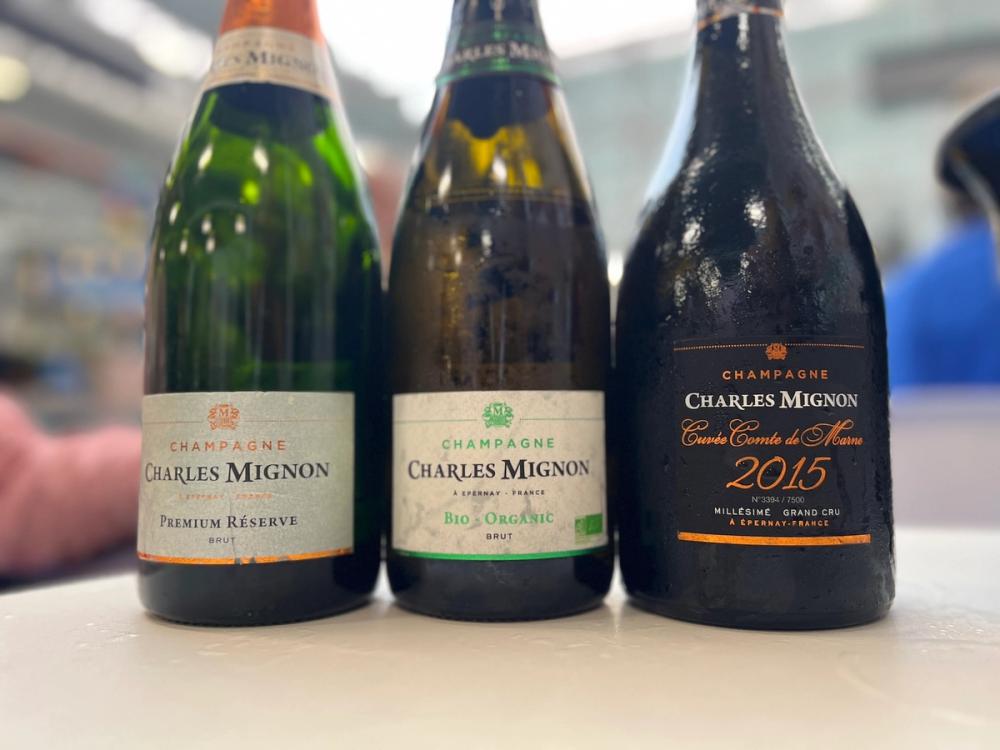
I tasted three Champagnes:
Champagne Charles Mignon Premium Reserve Brut
Based on the 2021 vintage with 15% reserve wines used from 2016. 55% Pinot Meunier, 25% Chardonnay 20% Pinot Noir. White fruit, yellow stone fruit, toasty notes – fresh, fruity, crowd-pleasing Champagne with a sweet edge, textured, approachable and with a nice mineral tingle on the finish.
Champagne Charles Mignon Bio-Organic
50% Chardonnay 30% Pinot Meunier 20% Pinot Noir with 12% reserve wine (from the 2016 & 2018 vintages) added to the 2020 vintage. 6g/l r/s and much drier than the previous wine. Aromas of white flowers mingle with toasty brioche. On the palate there is decent concentration and a mineral-charged core.
Champagne Charles Mignon Cuvée Comte de Marne 2015
From 10 Grand Cru sites this cuvee is made with 72.5% Chardonnay and 27.5% Pinot Noir with 6gm/l r/s. 7500 bottles and 1000 magnums produced. Clean, chalky, precise Champagne from low yielding vineyards, full-bodied, lovely concentration with attractive white flower notes. Laser-like, linear acidity runs through this wine which has great balance.
Champagne Pannier
Founded in 1899 originally in Dizy, just outside Epernay, Champagne Pannier then moved in 1937 to the town of Château-Thierry in the Marne Valley where it owns a network of chalk caves, perfect for ageing its wines in. In 1974 it sold to COVAMA, a cooperative which made Pannier its flagship brand. COVAMA is a union of 400 families farming 700 hectares of vines with 500,000 bottles of Pannier made each year across 12 different cuvées – the Selection Brut NV being the key focus – and sold in 50 different markets.

I tasted three Champagnes:
Champagne Pannier Selection Brut
Based on the 2018 and 2019 vintages with 20% reserve wines this blend is made up of 40% Chardonnay 30% Pinot Meunier 30% Pinot Noir. Fruit from 40 different villages are used to create the blend which is vinified in 100% steel vats. 8-9 gms/l r/s. Floral and fruity perfume, touch of confected fruit; the mousse is generous, the palate a nice balance between approachable, rounded, generous fruit and tense acidity. Delicate and easy to drink.
Champagne Pannier Exact Extra Brut
Exactly the same blend but with three years on the lees, 3-4 gms/l r/s and the fruit coming from 10 villages. More elegant, taut, with nice balance; clean, lovely purity the acidity and mineral core making this Champagne a natural for pairing with seafood.
Champagne Pannier Rosé Brut
The blend here is 50% Pinot Noir, 25% Chardonnay and 25% Pinot Meunier – 15% is red wine made from Pinot Meunier and 30% of the blend is made up of reserve wines. 8-9 gms/l r/s. The wine spends three years on the lees. Salmon pink with saffron highlights, fine bead, cherries and raspberries on the nose, the palate has red fruit with a lovely fresh balance.
Beyond Wines is a commercial partner of The Buyer.

